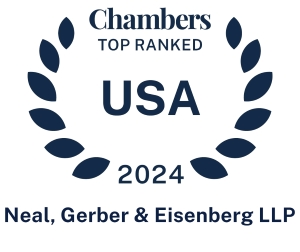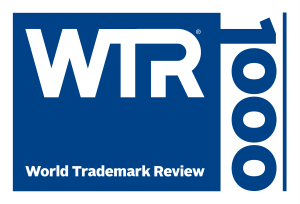Use of Forfeitures for Safe Harbor Contributions, QNECS and QMACS
The Internal Revenue Service (IRS) recently issued final regulations allowing forfeitures in 401(k) plans to be used to fund safe harbor contributions, qualified non-elective contributions (QNECs) and qualified matching contributions (QMACs). These regulations are very similar to the proposed regulations they replaced. Prior to the issuance of these regulations, the IRS required the amounts used to make safe harbor, QNECs and QMACs to a plan to be 100% vested at the time they were contributed to the plan. Since forfeitures would not be fully vested when initially contributed to a plan as matching or profit sharing contributions, forfeitures could not be used for any of these purposes. The final regulations now permit safe harbor, QNECs and QMACs to be vested at the time they are allocated to participant accounts, which allows forfeitures to be used for these contributions. These regulations are effective for plan years beginning on or after July 20, 2018, but can be applied earlier. Plan sponsors should review and amend their plan documents to make certain they take advantage of these new regulations.
Mental Health Parity Compliance a Focus of DOL Audits
The Department of Labor (DOL) continues to indicate that it has a particular focus on auditing whether health plans comply with the requirements of the Mental Health Parity and Addiction Equity Act of 2008 (the “Act”). The Act generally requires that, when a plan provides mental health and substance use disorder benefits, there be parity between the limits on treatment and charges imposed on mental health and substance use disorder benefits and the limits and charges imposed on medical and surgical benefits. While the Act has been in place for a number of years, the DOL continues to find a number of health plans and insurers that impose more limits on treatment or higher financial burdens for mental health and substance use disorder benefits as opposed to medical/surgical benefits. In a report to Congress earlier this year, the DOL indicated that 378 compliance reviews in fiscal years 2016 and 2017 resulted in 136 citations for Act violations. The DOL also indicated that enforcement of the Act remains a priority in 2018.
Many of the violations found by the DOL were non-quantitative in nature. Areas where compliance was an issue included finding more stringent requirements for pre-certification on mental health/substance use services than for medical/surgical services, additional restrictions on residential treatment for mental health/substance use matters than for medical/surgical services and other areas where plan requirements appear the same, but are more heavily enforced in the mental health area and substance use cases versus the medical/surgical area.
In April of 2018, the DOL, the Treasury Department and the Department of Health and Human Services released a variety of tools and guidance to help ensure compliance with the requirements of the Act. Included in the guidance was a set of proposed FAQs addressing non-quantitative treatment limitations in plans and disclosure obligations. In addition, the guidance included a 2018 comprehensive self-evaluation tool for plans and insurers. The self-evaluation tool is not easy to complete and requires a thorough examination of plan operations. However, the tool is useful in spotting potential issues with parity so that action can be taken before a potential audit. The DOL uses the tool when conducting its audits.
The 2018 guidance also contains resources for participants who believe that their mental health/substance use disorder benefits are out of compliance with the Act. The participants can submit a request for information to the plan and the plan should be ready to respond because the Act requires the plan to answer the disclosure requests. Given that participant complaints may be a trigger for a DOL audit, it is important for plans to understand and appreciate their disclosure obligations.
Given this comprehensive guidance and the DOL’s priority enforcement of the Act, it is advisable for plans to be proactive in using the tools to help assure compliance. Although the tools require some effort, they can be useful to demonstrate compliance in case of an audit.
Recent Cases Serve as Not-So-Friendly Reminders About Participant Communications
Two recent cases remind us of the importance of regularly reviewing disclosures to plan participants and other benefit plan practices.
Misleading Summary Plan Description
The recent case Pearce v. Chrysler Group LLC Pension Plan, dealt with the conflict between what was said in a summary plan description (SPD) and the terms of the actual plan document. In this case, the SPD described a special benefit for participants who had 30 or more years of service with Chrysler. However, the SPD description failed to include the requirement (contained in the plan document) that an individual was only eligible for the special benefit if he or she retired before commencing the benefit; no 30-year benefit was available if the individual was terminated before he or she retired. Mr. Pearce was offered an early retirement buyout from Chrysler which he turned down (believing that, based on the terms of the SPD, he would receive the 30-year benefit). He was then terminated from Chrysler. When he applied for the 30-year benefit, he was turned down based on the terms of the plan document. The district court ruled in Chrysler’s favor, finding that the plan document was controlling. On appeal, the court acknowledged that the plan document was controlling, but indicated that if the misrepresentation amounted to fraud or inequitable conduct, the court can rewrite the plan document to be consistent with the SPD disclosure. The case was remanded back for the district court to determine if there was fraud or inequitable conduct that would allow the reformation of the plan document to support Mr. Pearce being given the 30-year benefit. Interestingly, the finding of fraud or inequitable conduct in this instance would not require an intent to deceive. Generally, it would only require an act by a party in a position of trust or confidence that gives that party an undue advantage.
Plan sponsors should use this case as a reminder to review their plan documents and summary plan descriptions to be certain that all critical elements and requirements to receive a benefit are properly reflected in both places.
COBRA Notice Class Action
In the case Vazquez v. Marriott Int’l, Inc., the court allowed certification of a class of plaintiffs related to their receipt of allegedly improper COBRA notices. Ms. Vazquez was a former employee of Marriott International and was covered under its group health plan on the day prior to her termination. After her termination, she was timely provided a COBRA election notice that deviated from the Department of Labor’s model election notice. The notice she received allegedly left out critical components required by the regulations and that appear in the DOL’s model. Ms. Vazquez alleged that due to the notice deficiencies, she did not understand her rights to elect to continue her coverage. As such, she and her husband lost health plan coverage and incurred significant medical expenses. The judge in the case certified a class of former workers who received the same notice as Ms. Vazquez, saying that these workers all suffered the same potential injury.
In light of this case, plan sponsors should review their COBRA election notices and be certain that all of the critical elements are present. If COBRA compliance is outsourced, plan sponsors still need to make certain that the notices being used by the vendor are complete and compliant.
Fiduciary Rule Vacated by Court Action
After many years of review and debate, the Department of Labor (DOL) adopted a new rule, widely known as the Fiduciary Rule. The Fiduciary Rule expanded the scope of who is deemed to be a fiduciary for purposes of the Employee Retirement Income Security Act of 1974, as amended (ERISA). This rule, originally scheduled to be effective April 10, 2017, upended the financial services industry by requiring that new policies and practices be implemented to avoid running afoul of the obligations imposed on fiduciaries under ERISA, which are “the highest known to the law.” One of the early actions of the Trump administration was to delay the effective date of the Fiduciary Rule.
The authority of the DOL to issue the Fiduciary Rule was challenged in several court actions initiated by business groups. The Fifth Circuit Court of Appeals, in a 2-1 decision, ruled that the DOL did not have the authority to promulgate key provisions of the Fiduciary Rule and vacated the rule in its entirety on March 15, 2018. This decision became final in June, 2018 when the government did not seek Supreme Court review of the appeals court’s decision.
While the Fiduciary Rule is officially dead, the Securities and Exchange Commission has proposed its own “best interest rule” which would impose higher standards of conduct on certain advisers.
The Importance of Reviewing Interest Rate Assumptions in Withdrawal Liability Assessments
An employer who is assessed withdrawal liability by a multiemployer pension fund would be well advised to examine the assessment carefully to determine if it should be challenged. One focus of this examination should be confirming that the employer’s contribution history has been accurately reflected in the pension fund’s calculation. Another focus should be analyzing the assumptions used by the pension fund’s actuary in performing the calculation – specifically, the interest rate used to determine the withdrawal liability. Two U.S. district court decisions issued this year, The New York Times Company v. Newspaper and Mail Deliverers’-Publishers’ Pension Fund et al., and Manhattan Ford Lincoln, Inc. v. UAW Local 259 Pension Fund, highlight the impact the interest rate assumption has on the withdrawal liability determination.
Some pension funds in calculating withdrawal liability will apply the same interest rate the fund uses for minimum funding purposes. Other funds, however, will use either rates published by the Pension Benefit Guaranty Corporation (PBGC) (based on the rate of return of low-risk assets) or the “Segal Blend” (a method developed by The Segal Company which involves two separate calculations, one using the PBGC rates and the other the minimum funding rate). The PBGC or Segal Blend rates will typically be lower than the funding rate, which leads to higher withdrawal liability assessments (sometimes, significantly higher).
Both the New York Times and the Manhattan Ford courts held that actuaries are not required to adopt the same actuarial assumptions in calculating withdrawal liability as those used to calculate minimum funding. However, the cases had different outcomes on the question of whether the rates actually used to determine withdrawal liability were appropriate. In New York Times, the court held, based on the actuary’s testimony, that use of the Segal Blend did not represent the actuary’s best estimate of anticipated experience of the plan, and as such it was improper. In contrast, the Manhattan Ford court noted that minimum funding and withdrawal liability are different concepts under ERISA with different, although related, policy concerns. The court also noted that different actuarial assumptions may be warranted because the withdrawal liability represented a one-time settlement between the pension fund and the withdrawing employer. The court held that the arbitrator did not clearly err in accepting the theories behind the Segal Blend.
Neither of these cases represents the last word on the question of how much latitude a pension fund actuary has in setting interest rate assumptions for withdrawal liability assessments. However, since the vested benefit liabilities in a pension fund determined by using PBGC rates can be as much as twice the vested benefit liabilities using the funding rate, a withdrawing employer should examine the interest rate assumptions closely and consider challenging the assessment when the withdrawal liability rate differs considerably from the funding rate.
Rule 701 Amended to Ease Requirements for Issuance of Options and Equity to Employees and Other Service Providers
Private companies may issue options and other equity to their employees, directors and consultants by relying upon the exemption from securities registration under Rule 701 of the Securities Act of 1933. Rule 701 applies to offers and sales of securities under certain compensatory benefit plans. One of the requirements of Rule 701 is that certain financial information be disclosed to the recipient of an option or other equity if the aggregate sales price or amount of securities sold during any consecutive 12-month period exceeds a designated dollar limit. That limit had been $5 million, but was increased to $10 million effective July 23, 2018 pursuant to an amendment to Rule 701 adopted by the Securities and Exchange Commission. The Commission was mandated to issue this amendment by the Economic Growth, Regulatory Relief, and Consumer Protection Act.
Association Health Plans – Will They Expand Health Care Coverage Options?
In an effort to expand health care coverage options for employers, the Department of Labor (DOL) recently finalized a rule (the “AHP Rule”) that eases the requirements for an association to offer health care coverage to employees of the association members. The intent of the AHP Rule is to help lower the cost of health care coverage by taking advantage of the increased bargaining power, economies of scale and efficiencies that a group of employers may command. The group health plan sponsored by the association would be subject to federal law, but also would be subject to state regulation, as described below. The impact of the AHP Rule is uncertain at this time due to the opposition of a number of states. However, the desire of small businesses and the self-employed to obtain health coverage at a lower cost will likely result in associations being formed in states that are more receptive to association health plans (AHPs).
Background. Prior to the adoption of the AHP Rule, certain associations were permitted to offer a health care plan to their members, but strict requirements applied. An association could not be formed for the purpose of providing health care coverage, rather a commonality of interest or close nexus among the employers was required and self-employed individuals who do did not have any employees were not permitted to be covered. The AHP Rule continues to permit associations to sponsor group health plans under the law in effect prior to the AHP Rule. However, the AHP Rule expands the ability of associations to offer group health plans.
Applicable Laws. Employee benefit plans that are subject to the federal Employee Retirement Income Security Act of 1974, as amended (ERISA) are generally exempt from state law. However, ERISA permits certain state regulation of plans that cover employees of multiple unrelated employers. This state regulation continues to exist under the AHP Rule, although the DOL has indicated that it may seek to curtail such state regulation if it undermines the purposes of the AHP Rule.
AHPs. Following is a brief description of the requirements that an association must meet to offer a group health plan under the AHP Rule, the federal and state requirements that will apply to an AHP and the states’ reactions to AHPs.
Requirements for AHPs. An association must meet the following requirements to offer health care coverage:
- The association must have a formal organizational structure with a governing body and bylaws or other similar indications of formality;
- The association must be controlled by its members and the employer members that participate in the health care plan must control the health care plan;
- The employee members must share a commonality of interest, which can be met if the employers are in the same trade, business, line of business or profession or if each employer has a principal place of business in a state or a metropolitan area (which can include more than one state);
- The primary purpose of the association may be to provide health care coverage, but the association must also have at least one other substantial business purpose;
- An employer member that participates in the AHP must be acting directly as an employer of an employee who is a participant covered under the plan. However, a self-employed individual without any employees may participate in the health plan; provided that the individual meets specified requirements intended to establish that he or she is a bona fide working owner;
- Participation in the AHP must be limited to employees and certain former employees of a current employer member and such employees’ beneficiaries;
- The association and the group health coverage cannot condition membership on any health factor and must meet other nondiscrimination requirements.
Federal Rules that Apply to AHPs. An AHP that covers more than 50 employees is treated as a large health plan under the Affordable Care Act. This means that the AHP avoids the requirements that would apply to its members if they were covered under a small group plan or as an individual. Under the Affordable Care Act, a small group health plan and an individual policy must provide essential health benefits, are largely prohibited from denying coverage based on health and other factors and premiums are determined based on a unified pool, rather than the profile of the small group or individual. As noted below, the ability of an AHP to avoid these requirements is the basis for a lawsuit filed by 11 states and the District of Columbia to invalidate the AHP Rule.
AHPs are subject to the requirements of ERISA. This means that the disclosure and reporting requirements of ERISA apply to AHPs (e.g. summary plan descriptions are required). AHPs must follow the DOL’s claims procedures that apply to group health plans and the fiduciary requirements apply to AHPs. AHPs are also subject to the requirements of other laws that apply to group health plans, such as COBRA, the Health Insurance Portability and Accountability Act, the Affordable Care Act and the Mental Health Parity and Addiction Equity Act of 2008.
State Regulation of AHPs. States are expressly given the authority to regulate AHPs because an AHP covers employees of unrelated employers and thus is considered a “multiple employer welfare association” or “MEWA.” AHPs that provide insured benefits are subject to less state regulation than an AHP that is self-insured. For a fully insured AHP, a state may regulate the maintenance of specified contribution and reserve levels. In addition, health insurance issuers that sell policies to AHPs and the insurance policies that AHPs purchase are subject to applicable state laws.
If an AHP is not fully insured, then any state law that regulates insurance may apply to the AHP to the extent that such state law is “not inconsistent” with ERISA. This would permit a state to treat a self-insured AHP like an insurance company and subject the AHP to all of the reserve and reporting requirements to which an insurance company is subject.
Given the greater state regulation that applies to a self-insured plan as compared to an insured AHPs, AHPs are more likely to provide insured health care benefits.
States’ Reaction to Association Health Plan Rule. The attorney generals of 11 states and the District of Columbia have filed a lawsuit asking the court to invalidate the AHP Rule. The attorney generals claim that the AHP Rule undermines key purposes of the Affordable Care Act and would lead to fraud and reduced protection for consumers. This lawsuit creates uncertainty regarding the future of the AHP Rule, which could lead to a reluctance to create an AHP until this litigation is resolved.
In addition, a state has the authority to regulate insurance policies issued in its state to cover benefits provided by an AHP. For example, New York and Pennsylvania do not permit health insurance coverage to be offered by an association that was formed for the purpose of providing health insurance to its members. While the DOL has the ability to exempt AHPs from certain state law requirements, the DOL has declined to do so at this time. However, the DOL has signaled a willingness to provide an exemption if it perceives that states are subverting the AHP Rule.
Summary. Given the uncertainties regarding the AHP Rule, it is not likely to be the “game changer” for which many hoped. For any group considering the creation of an association that would offer an AHP, careful consideration has to be given to the states in which the AHP will operate and the state’s regulatory position regarding AHPs. Offering an AHP that will cover residents of more than one state could be problematic, unless each of the involved states permits AHPs.











